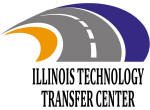Technology Transfer Center

The Technology Transfer (T2) Program is a nationwide effort financed jointly by the Federal Highway Administration and individual state departments of transportation. Its purpose is to transfer the latest state-of-the-art technology in the areas of roads and bridges by translating the technology into terms understood by local and state highway or transportation personnel.


